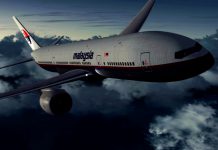Norse Atlantic Airways is indeed the cautious Viking and one of Bjørn Tore Larsen’s biggest challenges is to explain why his company is different, over and over again.
In 2022, he started the low-cost long-haul airline Norse Atlantic Airways, flying exclusively transatlantic routes from Europe to the US. As he did so by taking over 15 Boeing 787-9s formerly in service with Norwegian Air Shuttle, and as he was involved in Norwegian by providing crews to them through his company, today he needs to do a lot of clarification.
Subscribe to the Airlineratings.com newsletter to get the relevant news first
Often repeating himself: “We are completely different. We fly exclusively long-haul, something very few airlines do. And we do it in the low-cost category, offering good value for money. We are not a hub-and-spoke airline as Norwegian, feeding its long-haul flights, we only do non-stop flights,” Larsen describes in an interview with Airlineratings.com
Norwegian Air Shuttle was the first new airline from Scandinavia that appeared on the global aviation map in 2013. It operated up to 35 Boeing 787s from Europe to Asia and America, even setting up a local franchise in Argentina. But Norwegian was always on the brink of over-expanding and had to scale back and restructure even before the pandemic.

During Covid, Norwegian had to cease long-haul operations entirely in 2021, as it needed to shrink dramatically in order to save itself during the pandemic. Today Norwegian is a European low-cost carrier again, flying solely Boeing 737s. But Norwegian’s pain was Bjørn Tore Larsen’s gain: “We emerged from the pandemic, as Norwegian and many other companies had to exit long-haul flying. There were very few operators in a position to take on long-haul aircraft, this was a golden opportunity for us. Industry insiders report that Larsen was able to lease the grounded Boeing 787s for half the usual market price. He immediately realized this was a unique bargain, similar to Ryanair CEO Michael O’Leary, who stocked up on his Boeing 737 fleet on the cheap after 9/11.
It was a risk for Bjørn Tore Larsen being a novice in the airline industry. The 56-year-old self-made entrepreneur became wealthy as the founder of OSM Maritime, one of the global market leaders for ship management, employing over 30,000 people worldwide. But Larsen admits to his great love to fly general aviation airplanes, he even holds a pilot’s licence for the Boeing 747, though he never flew a real one.

“I am new in leading an airline, I have never worked in an airline or for one before,” he concedes. But Larsen surely learnt his lessons from Norwegian’s predicament. “We are acting cautiously and don’t want to over-expand prematurely, so as not to have greater growth than we can handle,” he says. “Anyone knows it’s close to insane starting a new airline, at least it’s a good way to lose very, very much money,” he stated on starting operations. “But I believe there is an entrance to the market that can be attractive if it’s done the right way. I am convinced we can do it in a way that customers are satisfied with and we are profitable.”
Norse Atlantic Airways launched its maiden flight on June 14, 2022, on the route from Oslo to New York JFK, with Orlando and Fort Lauderdale in Florida, as well as Los Angeles, becoming the next destinations. Slightly later Norse started services from London-Gatwick to JFK as well, initially as an intermediate stop on the way from Oslo to New York, from May its now-certified British-registered affiliate Norse Atlantic UK will take over and launch flights to Orlando and Fort Lauderdale as well. In August 2022 Norse also started flying from Berlin to New York daily plus operating three weekly services to Los Angeles, with the latter, only lasting for two months, however.
The actual offering of Norse Atlantic Airways seems very familiar. An online check reveals flights from London to New York in March start with fares of US$253 one way, but it just includes a small piece of carry-on fitting under the seat and water as the only inflight service. All else has to be paid for separately, and in the end, the total price including meals and checked luggage is often not even much cheaper than fares on legacy carriers, especially on a route like London to New York. Even more familiar are the aircraft cabin configurations Norse offers, identical to what Norwegian had – as all 15 aircraft came from the predecessor. Currently the new airline flies ten of them, divided between the bases in Oslo and London, five others are on lease to Spanish carrier Air Europa until 2024.
Inside, the cabins offer 56 Premium seats in the front in 2-3-2 configuration and a pitch of 43” (109 cm), much more than most legacy carriers boast in their respective Premium Economy product. In the back, there are 282 Economy Seats in 3-3-3 configuration. Norse’s branding uses the Viking motif, with aircraft using the callsign “Longship” and the current TV ads comparing the harsh conditions on Viking’s ships with today’s amenities of flying. Most reviews so far have praised Norse as a mature low-cost product.
Staying focused on one market niche and a single aircraft type without constant expansion pressures, that’s how one could describe Norse’s concept. Bjørn Tore Larsen has nevertheless set high benchmarks: “In the second half of 2023 we want to be profitable, we’ll get there slowly and very focused. For us, it’s essential to grow in a controlled manner and to earn money with our aircraft, instead of parking them.” In the slower northern winter season, Norse flies charters for tour companies to the Caribbean and Thailand as well as military charters for the Norwegian Army and the US Marines. In its own route network the airline so far sticks strictly to its niche of transatlantic flying from Europe to US hubs. As low-cost long-haul capacity on the route is dramatically less now than before the pandemic, Norse feels it is in the right place at the right time. “It’s never a disadvantage to have low costs and a fabulous product, when you board our aircraft it doesn’t feel low cost,” insists Larsen. And adds: “Success means to survive, and that would be already a big success for us.”
























